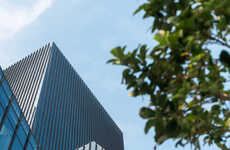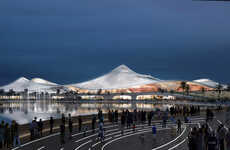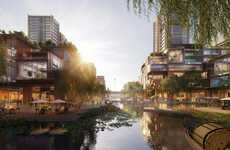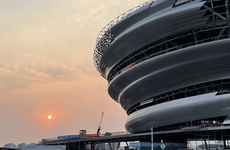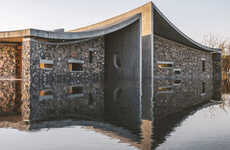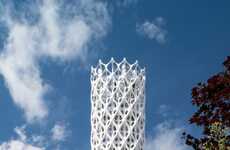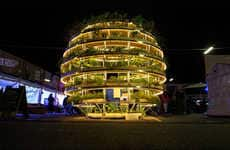
The 'Xinhee Design Center' Will be Built with "Skin" and "Bones"
Joey Haar — August 12, 2016 — Art & Design
The architectural plans for the Xinhee Design Center take inspiration from the human body. Since Xinhee is a fashion house, it wanted its building to reflect the bodies that it tirelessly works to decorate. The result, conceived by Beijing-based architecture firm MAD, is a building with a skeletal infrastructure that is covered in a "skin," much like the skin and bones that form human bodies.
The "bones" of the Xinhee Design Center consist of six wings that emanate from a central atrium. Around the outside of these wings will be draped a translucent layer of PTFE plastic rather than windows or some other facade material. Not only does plastic more closely mimic the consistency of skin, but it also allows for more precisely controlled heat regulation and sun-shading.
The "bones" of the Xinhee Design Center consist of six wings that emanate from a central atrium. Around the outside of these wings will be draped a translucent layer of PTFE plastic rather than windows or some other facade material. Not only does plastic more closely mimic the consistency of skin, but it also allows for more precisely controlled heat regulation and sun-shading.
Trend Themes
1. Anatomically-inspired Architecture - Architecture taking inspiration from the human body as a design element to innovate the construction industry.
2. Translucent Facades - Using PTFE plastic as a facade material to mimic the consistency of skin and innovate the building industry.
3. Biomorphic Structures - Constructing buildings with skeletal infrastructures covered in a 'skin' to mimic the natural world and innovate urban design.
Industry Implications
1. Fashion - Innovative construction techniques that mimic the human body can be applied to fashion boutiques, showrooms, and exhibition spaces to create visually stunning environments.
2. Architecture - Biomimicry and the use of translucent materials can be applied to other building designs, creating more efficient and environmentally-friendly structures in the process.
3. Sustainable Construction - Translucent facades and skeletal structures can help in making the construction industry more sustainable by reducing energy consumption and utilizing natural light more effectively.
4
Score
Popularity
Activity
Freshness


